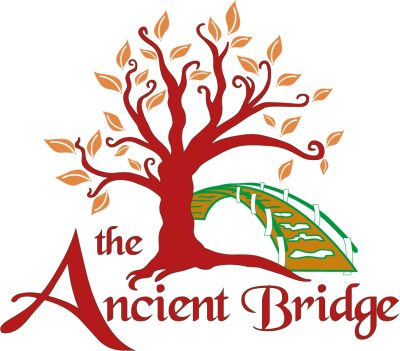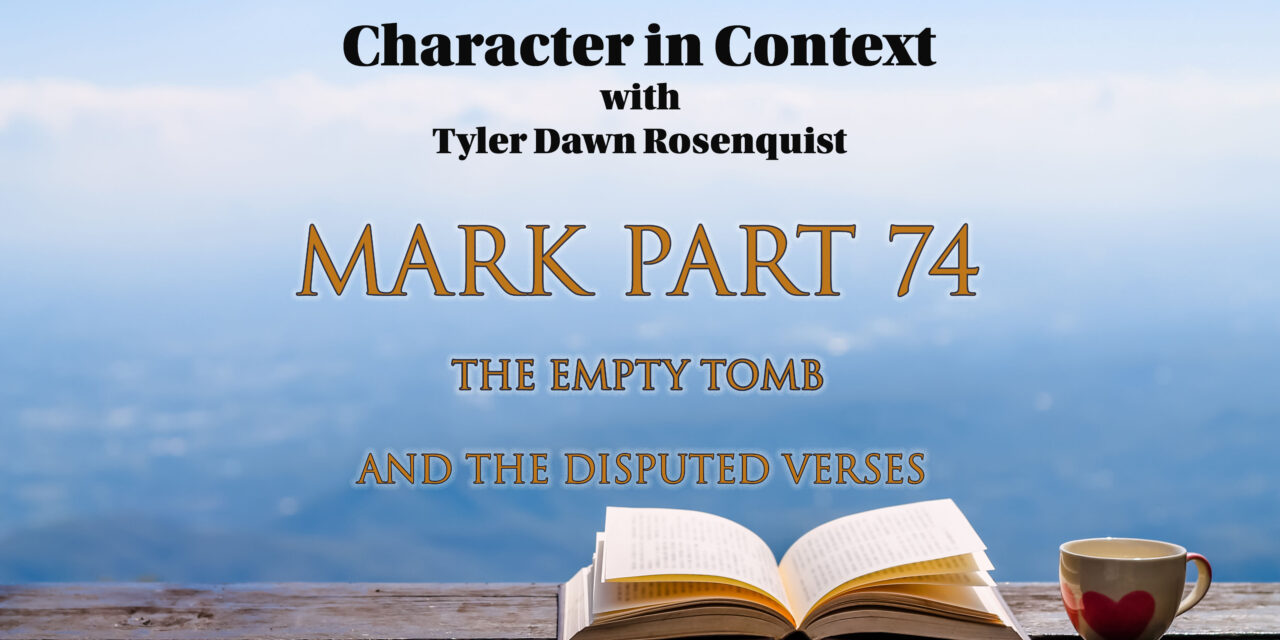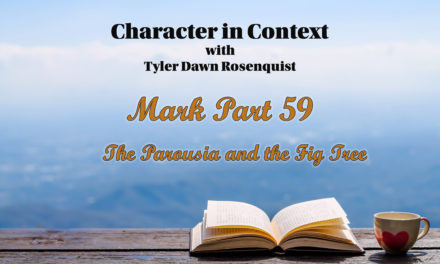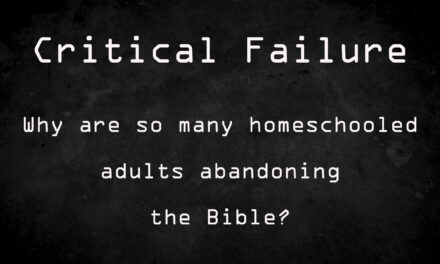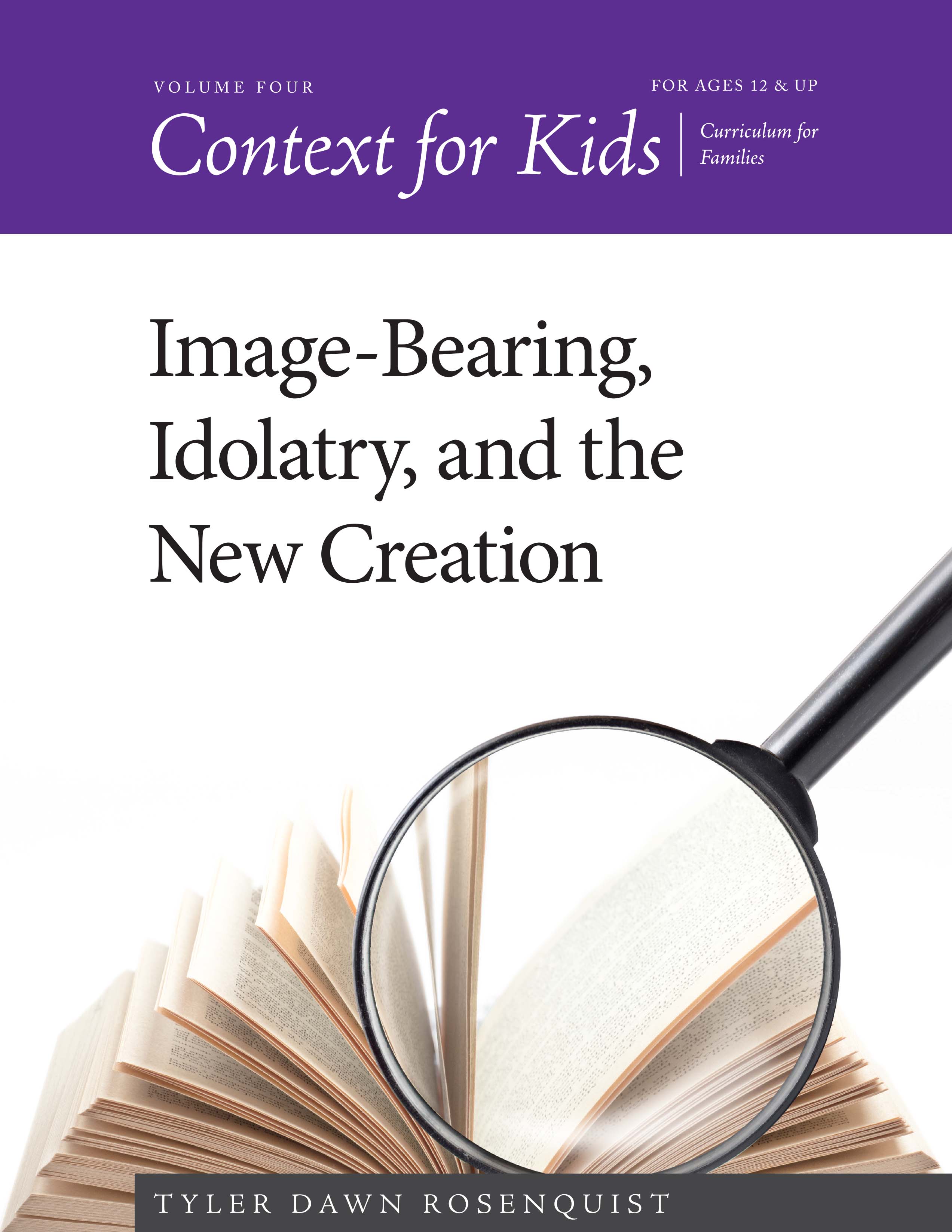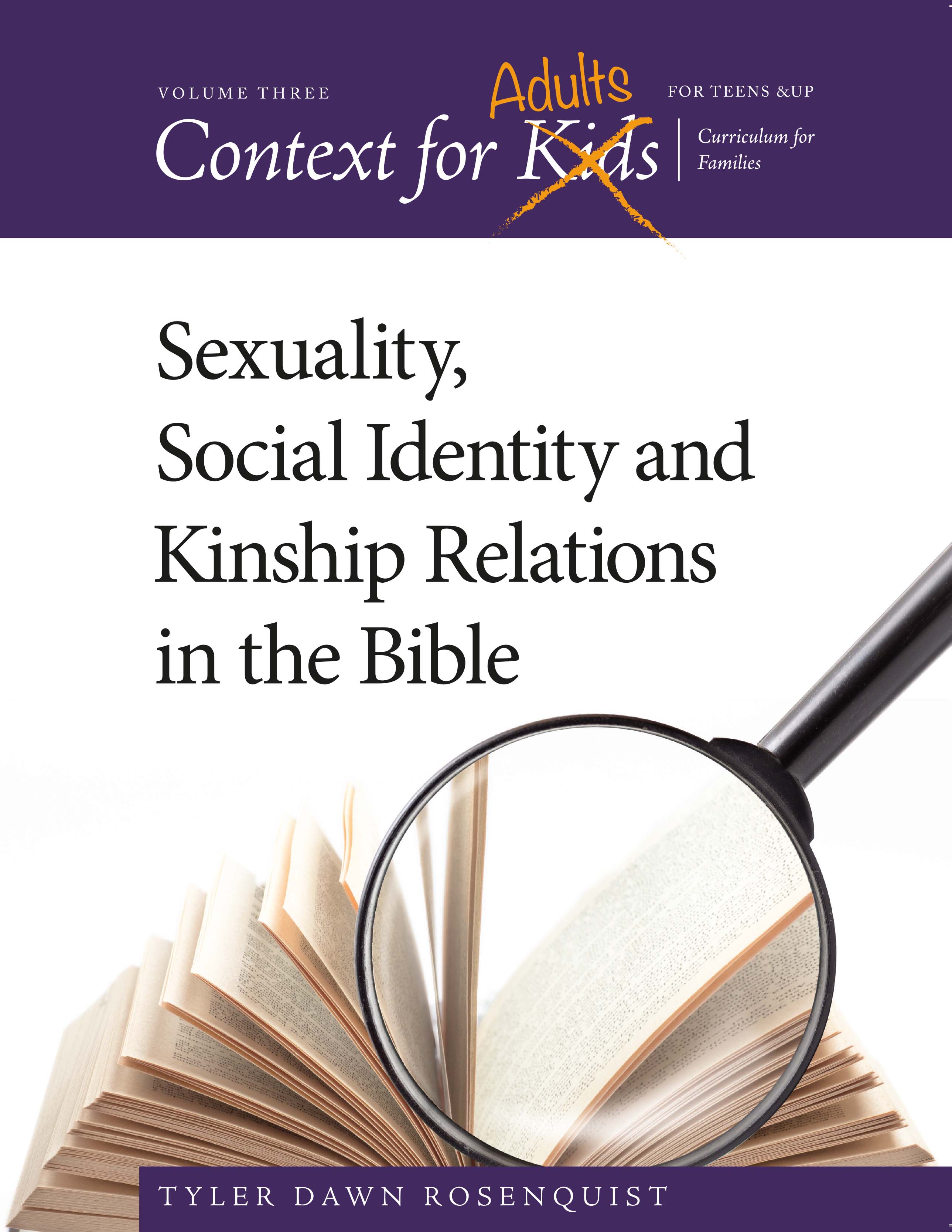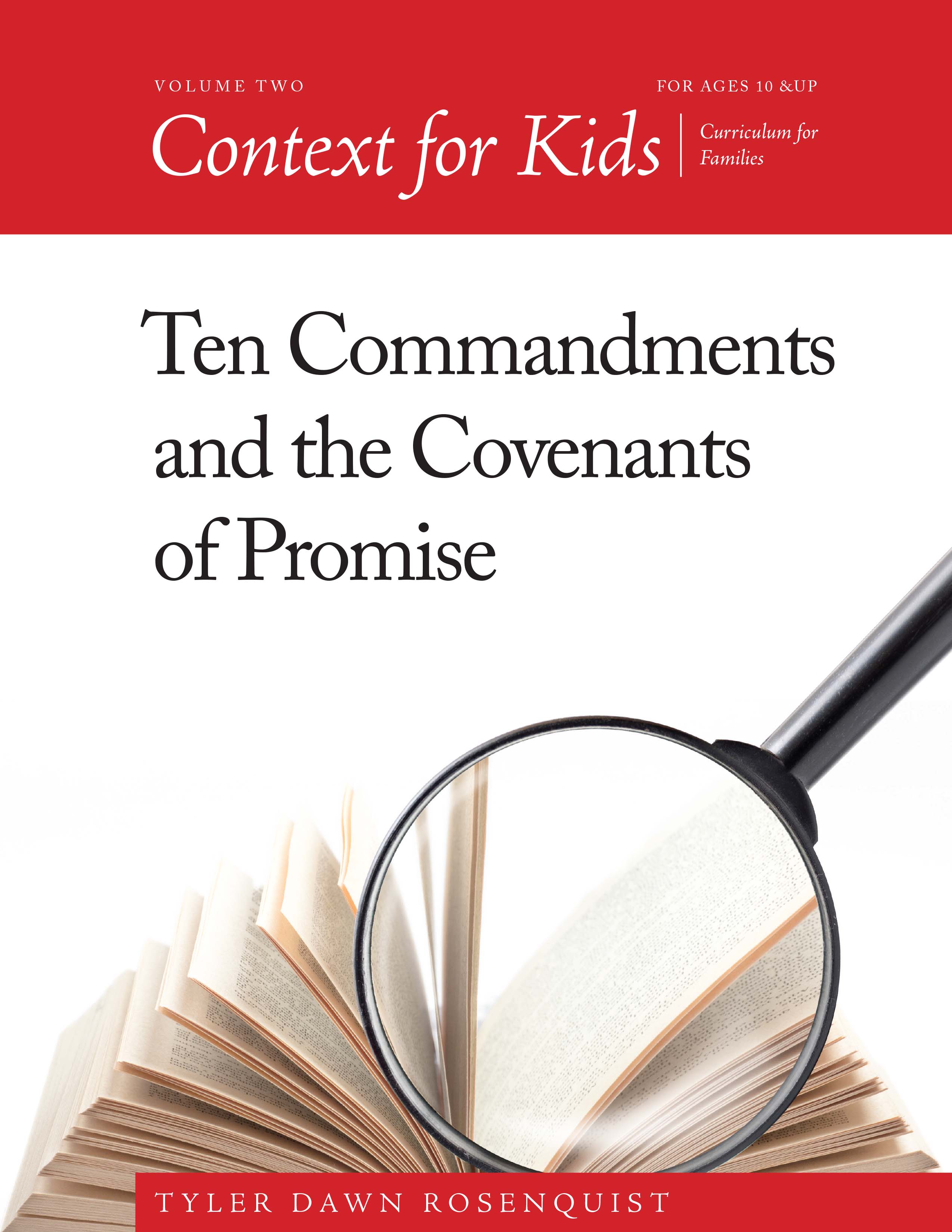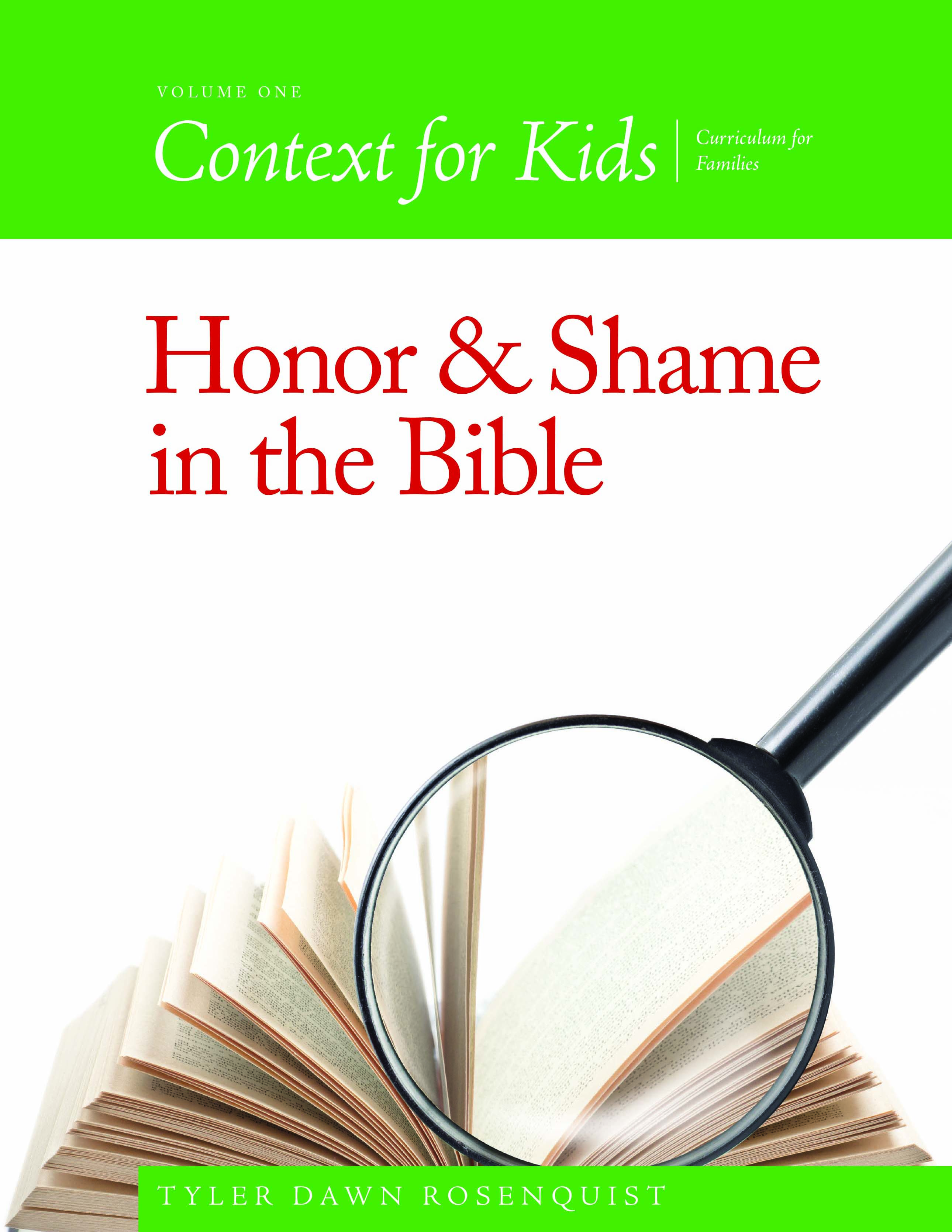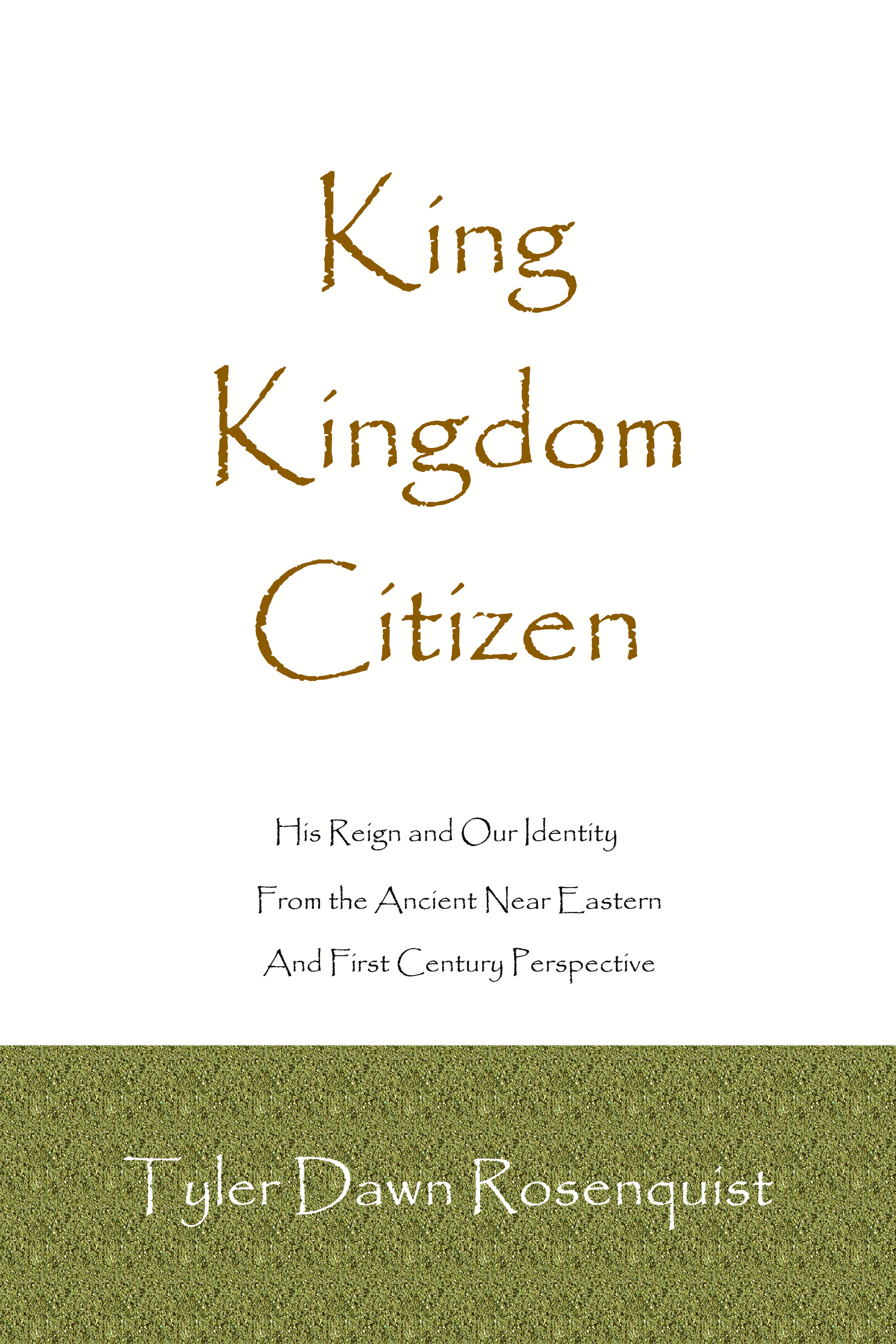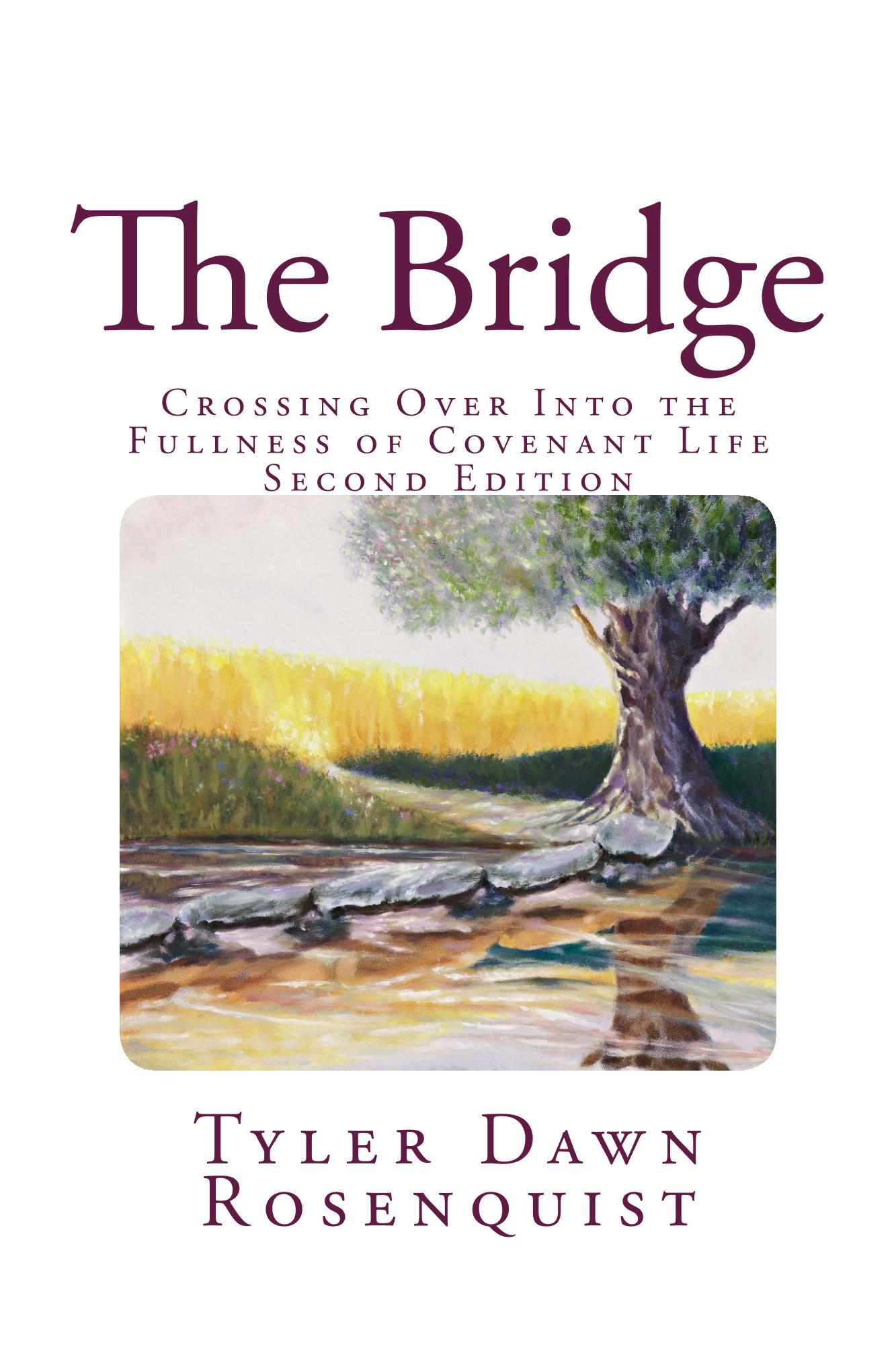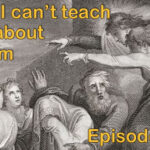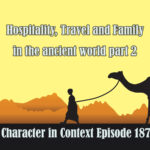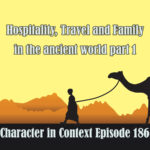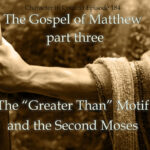At long last, the last episode about the Gospel of Mark and this one has a lot more context and controversy that most. We’re going to go through the entirety of chapter 16, including all four of the proposed endings—but are any of them the original? We will also talk about the legality of using women as witnesses during those times within Judaism.
(My affiliate links for Amazon products are included in the post. As an Amazon Associate, I earn from qualifying purchases.)
If you can’t see the podcast player, click here.
16 When the Sabbath was past, Mary Magdalene, Mary the mother of James, and Salome bought spices, so that they might go and anoint him. And very early on the first day of the week, when the sun had risen, they went to the tomb. And they were saying to one another, “Who will roll away the stone for us from the entrance of the tomb?” And looking up, they saw that the stone had been rolled back—it was very large. And entering the tomb, they saw a young man sitting on the right side, dressed in a white robe, and they were alarmed. And he said to them, “Do not be alarmed. You seek Jesus of Nazareth, who was crucified. He has risen; he is not here. See the place where they laid him. But go, tell his disciples and Peter that he is going before you to Galilee. There you will see him, just as he told you.” And they went out and fled from the tomb, for trembling and astonishment had seized them, and they said nothing to anyone, for they were afraid.
The oldest and most reliable transmissions of the Gospel of Mark end here, which as you can well imagine has caused a lot of confusion and controversy because someone either added to it or took away from it or perhaps the end was lost from the original. Truth is that we don’t know but we will be talking about that as well on this the final episode on Mark. Some people are so passionate about this unknown that they consider it heresy to even admit it. However, it really isn’t that big of a deal one way or the other. It’s good to know about and to know the arguments pro and con for the longer ending. Right now, we’re going to treat this as though verse eight is the last written by the author and then we will explore whether or not that makes sense and it’s something where everyone must come to their own conclusions but the deal is that no one knows for sure and it definitely isn’t a salvational issue. So, it’s interesting but let’s not fool ourselves into believing that it is worth dividing over.
This week, we are going to talk about the scandalous nature of these verses and how shocking this account would have been—far beyond the claims of a man being raised from the dead into a resurrection body before the general resurrection they had all expected at the end of the age. This is anything but a final chapter that wraps everything up neatly and nicely and, in fact, no matter which ending you go with, it leaves more questions than answers.
Hi, I am Tyler Dawn Rosenquist and welcome to Character in Context, where I teach the historical and ancient sociological context of Scripture with an eye to developing the character of the Messiah. If you prefer written material, I have seven years’ worth of blog at theancientbridge.com as well as my six books available on amazon—including a four-volume curriculum series dedicated to teaching Scriptural context in a way that even kids can understand it, called Context for Kids (affiliate link) and I have two video channels on YouTube with free Bible teachings for both adults and kids. You can find the link for those on my website. Past broadcasts of this program can be found at characterincontext.podbean.com and transcripts can be had for most broadcasts at theancientbridge.com. If you have kids, I also have a weekly broadcast where I teach them Bible context in a way that shows them why they can trust God and how He wants to have a relationship with them through the Messiah.
All Scripture this week comes courtesy of the ESV, the English Standard Version but you can follow along with whatever Bible you want. A list of my resources can be found attached to the transcript for Part two of this series at theancientbridge.com.
Last time, (weeks and weeks ago as I have been busy for the last month preparing for conferences and had to set this aside) we talked about the works of Joseph of Arimathea and his absolute courage in the risk he took (as a non-family member) to claim the body of a man crucified on the formal charge of sedition. That there were no repercussions is another witness that Pilate didn’t consider Yeshua/Jesus to be guilty but instead railroaded with trumped up charges. Don’t get me wrong, he was a brutal and evil man but he wasn’t an idiot. Joseph was allowed to take the body down from the cross and it wouldn’t have been a long journey (according to Dr Joan Taylor) to his own freshly hewn tomb within that same iron age rock quarry that was now a cultivated area aka garden. And you might ask how a rock quarry could become cultivatable? Over the course of a thousand years, and especially with the very hot dry winds in the summer, dirt moves and collects and gathers in depressions. From there, cultivation is not an impossible thing to accomplish.
16 When the Sabbath was past, Mary Magdalene, Mary the mother of James, and Salome bought spices, so that they might go and anoint him.
So, at the end of the weekly Sabbath, what we would call Saturday after sundown, those who had gathered to Yeshua at the cross (with the exception of His mother) bought spices. And people wonder if they didn’t know that Joseph had already performed this service where Yeshua would have been washed (allowable even on the Sabbath), and then wrapped in spices and linen, and laid in the tomb. However, even if they knew and were there to perform the washings (and they well might have helped Joseph because carrying that amount of dead weight and with how torn up his body was Joseph could not have accomplished this alone), it would speak to the esteem that they held Yeshua in because the weight of the spices applied was directly proportional to their honor. When Gamaliel was placed in the tomb, they reportedly wrapped him in 40 lbs of aromatic spices (Josephus, Ant. 17.8.3) and according to the Gospel of John, Yeshua was wrapped in just short of twice that amount. The normal amount of spices used for a VIP (commoners were only anointed with oil) was reportedly about ten lbs. What we don’t know is if these amounts are somewhat legendary and symbolic—the numbers in Scripture are often not literal as they were meant to communicate concepts and as such they were somewhat idiomatic. I also ought to point out that a Roman pound was only 12.4 oz instead of our modern 16 oz. So, according to John, Yeshua was wrapped in 54 pounds of spices and Gamaliel in 29 pounds. Of course, Mark doesn’t mention any of that. As Yeshua died long before Gamaliel (twenty years earlier), it may well be that a number twice the amount was given not because it is accurate but because of the truth of Yeshua’s standing. Even if it makes no sense to us, it did to them, and God always communicates at our level. Good thing too.
And every time I think we are out of Markan sandwiches, another one pops up. Remember that a Markan sandwich is the term used by scholars to describe the author’s habit of sandwiching one story inside of another one, where the outside story needs the inside story to be properly understood and interpreted. In this case, this has been a really huge sammich because it began with the anointing of Yeshua by the unnamed woman in Mark 14:3. What we have here are bookmarks on each side of the Passion account where women are (or at least are trying to) anoint Him for burial. It is significant that only the living Yeshua could be anointed by his women followers.
And very early on the first day of the week, when the sun had risen, they went to the tomb.
They had at least watched and possibly even helped and this is another reason I am in agreement with Justin Martyr, a second-century Church Father who was born a Samaritan and who often gives us a window into those times and the life, that the crucifixion happened on a Friday and that the three days and nights were idiomatic, just as we see throughout Scripture with that expression. But they would have set out to the tomb at around 5:30 in the morning, as soon as it was light enough to be safe for a group of women to travel. No way could they have gone on Saturday night after the Sabbath. Predators would be in areas where crucifixions were happening. The first day of the week, mia ton sabbaton, of course, is Sunday and also represents the eighth day. It was also the day of the firstfruit presentation of the barley in the Temple to Yahweh so that the new harvest could be enjoyed.
So, there is a lot more symbolism here than Mark generally uses. It’s really thick and very heavy. Early on the first day of the week, the eighth day which is symbolic of New Creation after the Sabbath, which celebrates the installment of Yahweh as King over the universe in His Cosmic Tabernacle. The sun has arisen, light has replaced/conquered darkness. The faithful disciples have traveled to a place of death and decay. And all four Gospels are adamant about their presence, which is stunning for reasons we will cover in a bit. If they had helped Joseph then they knew what to expect and if they hadn’t, they have no idea what the condition the body of Yeshua will be in when they enter the tomb.
And they were saying to one another, “Who will roll away the stone for us from the entrance of the tomb?”
It’s really remarkable. They went to considerable expense, perhaps not knowing if Yeshua had been properly prepared, or just wanting to redouble the honor owed to their Teacher. But they have so many questions! Who will roll away the stone? And it was no small concern because the stones had to be awkward and heavy enough to keep animals out. But let’s maybe tip a sacred cow here and ask ourselves if the stone was really a disk or some other rounded shape. Although that’s the popular picture we see and the text in English certainly does support the idea of a disk and there were tombs with disk shaped stones, how likely was it? And the reason I ask is because out of more than nine hundred tombs in the area, only four had disk-shaped stones that could be rolled aside and those all belonged to families who were either royalty or extremely wealthy. Although such stones were more common in Byzantine times, at this point they were very much a novelty for the uber rich. I am linking a great article here by Megan Sauter, who is the Managing Editor at the Biblical Archaeology Society. She has also excavated at Ashkelon and Tel Shimron—having a Master’s Degree in Biblical Archaeology from Wheaton, which means she probably got to take classes from John Walton, making me officially jealous. The article is called How Was Jesus’ Tomb Sealed? Examining the tomb of Jesus in light of Second Temple-period Jerusalem tombs.
The openings for these tombs were actually quite small, nothing like the one at the Holy Land Experience, which I was able to walk into. One would have to get down and crawl inside and they would be most often blocked by large, long stone corks which would have to first be pulled out and then rolled away. This was an incredibly difficult thing to do. All of the Synoptics (Matthew, Mark, and Luke), use the word apokylio which is a compound meaning both to roll and away from. John uses something different to describe what happened. John uses the word hairo, which means to take away. What John is describing suits the archaeological evidence much better than simply rolling the stone away without any explanation of what direction or how. If it had been disk shaped, it would have been a far less awkward job for a few women to manage, but if it was a solid stone cork needing pulled out and rolled away, they would definitely need some more muscle. What’s really amazing is that even knowing that they couldn’t manage it themselves, they went anyway.
And looking up, they saw that the stone had been rolled back—it was very large.
The description is the generic megas, with the qualifier that it was extremely large. And before we assume that it means tall, it doesn’t make that claim. The audience has to be taken into account. Remember we have all these foreign Roman concepts and loan words inserted into Mark’s account. This wasn’t a Jewish or solely Jewish audience—this was at the very least, mixed and probably the majority were converted Gentiles. In Rome, cremation was the normal practice for dealing with all but the most elaborate burials, state burials, where they would use a sarcophagus. The author of Mark, being the very first written compilation of the oral stories about Yeshua, would need to explain about the tomb and about how they kept out wild animals. And so, the stone blocking the entrance would be described as very big. But the stone, whether a disk rolled to the side or pulled out and then rolled away, is no longer protecting the tomb from predators. Was someone already in there caring for Him? Had He been dragged off by wild animals to be eaten and, worse, defecated onto the ground somewhere. Or perhaps his body was stolen by those who hated Him. Nothing is said here about their assumptions or their mood, whether they were curious or horrified.
And entering the tomb, they saw a young man sitting on the right side, dressed in a white robe, and they were alarmed.
They would have had to get down low to get in, at the very least stooping in order to enter the larger space inside or having to crawl in. Why were they alarmed? One, this was not someone they knew. Two, his robes weren’t likely just white. Although leukos can mean simply white, in this sort of situation is also carries the connotation of being dazzling—like Yeshua’s robes at His transfiguration. I am going to tell you that I saw an angel like this once, ONCE, and the word alarmed just doesn’t cut it. I screamed bloody murder—it is more alarming that you can imagine and especially when you have no warning and when it isn’t a vision. Angels in visions and dreams, not scary, and in fact they inspire questions more than anything else. In real life? Ain’t nobody going to be nonchalant about that and whenever someone tells me about casually seeing angels—just no. I am not buying it. Even when they aren’t hostile, they are awe-inspiring. But this “young man” is sitting on the right side, which is indicative of a position of high honor. And obviously, being the angel chosen to deliver this good, life-changing, world-altering news is extremely honorable.
And he said to them, “Do not be alarmed. You seek Jesus of Nazareth, who was crucified. He has risen; he is not here. See the place where they laid him.”
Another indicator that this “young man” is an angel is his opening greeting, “Do not be alarmed,” me ekthambeo. This means that the first people to hear the good news of the resurrection were women but it also tells us that they were almost certainly not helping Joseph of Arimathea—who evidently had other help because the angel says “see the place where they laid Him.” The word for risen here is egeiro, which appears throughout the Gospel of Mark nineteen times—half of those it refers to literal resurrection and another five refer to Yeshua raising someone to their feet or commanding them to get up after restoring them in some way. And so, although this can also be a very generic word, like for getting up out of bed or standing from being seated, Mark uses it very deliberately as the foreshadowing and fulfillment of the Greater Exodus that began very quietly in the relative backwater Galilee, far from Jerusalem and exploded after Pentecost/Shavuot.
Now, something else here that is really fascinating is that not a single Jewish source denies that the tomb was empty. For that matter, they don’t deny that Yeshua lived either. Some attempt to discredit His miracles as sorcery and they do differ as to the nature of the trial. But no one denies the empty tomb, which makes it as much of a historical fact as any in history. The tomb was empty—why or what it meant is what is debated and contested. In Dialogue with Trypho, Justin Martyr (born a Samaritan around 100 CE), wrote the following: Justin: And though all the men of your nation knew the incidents in the life of Jonah, and though Christ said among you that He would give the sign of Jonah, exhorting you to repent of your wicked deeds at least after He rose again from the dead, and to mourn before God as did the Ninevites, in order that your nation and city might not be taken and destroyed, as they have been destroyed; yet you not only have not repented, after you learned that He rose from the dead, but, as I said before you have sent chosen and ordained men throughout all the world to proclaim that a godless and lawless heresy had sprung from one Jesus, a Galilæan deceiver, whom we crucified, but his disciples stole him by night from the tomb, where he was laid when unfastened from the cross, and now deceive men by asserting that he has risen from the dead and ascended to heaven. Moreover, you accuse Him of having taught those godless, lawless, and unholy doctrines which you mention to the condemnation of those who confess Him to be Christ, and a Teacher from and Son of God. Besides this, even when your city is captured, and your land ravaged, you do not repent, but dare to utter imprecations on Him and all who believe in Him. Yet we do not hate you or those who, by your means, have conceived such prejudices against us; but we pray that even now all of you may repent and obtain mercy from God, the compassionate and long-suffering Father of all. (108)
This was written somewhere between ten and thirty years after the bar Kochba Revolt when Judea was absolutely devastated, and both Jews and Christians were permanently barred from Jerusalem, which became a completely Roman city complete with a Temple to Jupiter atop the Temple Mount. Justin is actually pleading with them to see both of the destructions of Jerusalem over the course of less than a hundred years as proof of God’s judgment against the city, as predicted by Yeshua.
One more thing, in typical angelic fashion, there are no details about why or how or what happened or exactly when. So whenever people are bickering about the end of Sabbath or Sunday morning, it’s all just opinion. Nothing to get into a huff about.
“But go, tell his disciples and Peter that he is going before you to Galilee. There you will see him, just as he told you.”
Wait—what? This angel is telling WOMEN to go witness the empty tomb and the resurrection to the disciples and EVEN Peter, Mister, “Oh, even if all these other jokers deny you, I never will. I’ll die first!” Why is this a problem and why is this also a clear mark of authenticity? And when we look for signs of authenticity, they come down to factoids that no one in their right mind would make up—like a crucified Messiah, so shameful that it made an utter mockery of believers. In this statement though, an angel is telling illegal witnesses to go and give the most earth-shattering news in all of history. Why illegal? Because in terms of credibility, women were lumped in with children and the mentally disabled as being unfit to carry news of any importance or to testify in court.
m.RH 1.8 The following are unfit to give testimony, as they are considered thieves and robbers: One who plays with dice [kubbiyya] or other games of chance for money; and those who lend money with interest; and those who race pigeons and place wagers on the outcome; and merchants who deal in produce of the Sabbatical Year, which may be eaten, but may not be an object of commerce; and slaves. This is the principle: Any testimony for which a woman is unfit, these too are unfit. Although in certain cases a woman’s testimony is accepted, e.g., to testify to the death of someone’s husband, in the majority of cases her testimony is not valid.
m.Shev 4.1 The oath of testimony is practiced with regard to men but not with regard to women, with regard to non-relatives of the litigants but not with regard to relatives, with regard to those fit to testify but not with regard to those unfit to testify due to a transgression that they performed. And the oath of testimony is practiced only with regard to those fit to testify…
Ant. 4.8.15 But let not a single witness be credited, but three, or two at the least, and those such whose testimony is confirmed by their good lives. But let not the testimony of women be admitted, on account of the levity and boldness of their sex 1 Nor let servants be admitted to give testimony, on account of the ignobility of their soul; since it is probable that they may not speak truth, either out of hope of gain, or fear of punishment. But if any one be believed to have borne false witness, let him, when he is convicted, suffer all the very same punishments which he against whom he bore witness was to have suffered. (Josephus)
So, although no such prohibition is in Torah, nor any against women having leadership or authority in general and seems to be more of a Jewish response to Hellenization, which would explain Paul having to deal with it in some places but not others within the greater Roman Empire, we do see these beliefs in both later (mishnaic) and contemporary (Josephus) sources. Women at this point in time are not trusted to be serious enough to give testimony in court unless it is the identify a family member. Thank goodness they thought we were clever enough to get that right! But this angel obviously isn’t impressed with the opinions of the guys in this point in history and gives the job to the women who came to the tomb.
Now the specific wording of the message tells them that Yeshua is going before them to Galilee—and the language is very specific. It is proago, a present tense (now) military term used for troop movements but where else do we find it? In the Greek Old Testament, a few hundred years before Yeshua, we see it used in ways that describe the fate of those who cherish wisdom, the promotion of Mordecai, and in II Macc 10:1 it is used to describe Yahweh Himself leading the troops forward in order to purify the Temple. And where is He going? To Galilee! Why? Because it is far from safe in Jerusalem, which has been judged for condemning and destroying the presence of Yahweh. The city, as we saw in Chapter 13, is under the most severe of judgments, as is the Temple. In forty years and then again sixty-five years later, it will no longer even exist as Jerusalem. Truth is that Jerusalem was all but wiped off the map for hundreds and hundreds of years. Although they will return for the festival of Shavuot/Pentecost in roughly six weeks, the time they spend with glorified Yeshua will be in the north.
When did He tell them this? Mark 14:28 at the Last Supper and actually the wording is almost entirely the same.
And they went out and fled from the tomb, for trembling and astonishment had seized them, and they said nothing to anyone, for they were afraid.
And this is the end of some of our oldest and most important manuscripts of Mark! But we’ll get to that in a minute. Frankly, this has all the emotional turmoil of those who believe and do not believe that Pluto is a planet. Oh yes, people fight about it—and about the ending of Mark. Mostly because no one can prove either or, we just have opinions and some people even have reasons for their opinions, but most just have opinions, as with most things.
But is this ending particularly satisfying? Heck no. However, that still isn’t reason enough for anyone to be 100% certain that the contested verses are original. The angel gives them this message, and they run, and I don’t blame them because this is like the scariest thing ever but then they are like the only people who keep quiet about anything. We had all these incidents where this guy and that guy are told not to blab and what do they do? They go right out and run their mouths off and Yeshua can’t even be in a town because folks are just flocking to Him. But now, when someone is told to actually go and blab, they don’t. What we do know is that they were “trembling”, “astonished” and “afraid. Of course, despite all this fear, we know that they did at some point tell what happened. Evidently, they needed to calm down first. But this ending of Mark says nothing about any of that. Was it because the audience all knew? Was it a witticism at the end because humans are so prone to talk when they shouldn’t and so averse to talking when they should? Was it meant to leave the audience in anticipation (a common rhetorical device in those days)? Was the original last page damaged, lost, or torn away? Truth is that we don’t know and too many people have been trained to suspect “the lying pen of the scribe” as a solution to every textual question. “Oh they must have removed those final verses in order to subvert the Gospel!” To which I would reply, “But what is there in those last verses that isn’t in other places?” Why do people always seem to be more apt to make the accusation that someone has taken from instead of adding to? So, let’s look at those contested verses and try to figure out what might have happened.
9 Now when he rose early on the first day of the week, he appeared first to Mary Magdalene, from whom he had cast out seven demons. 10 She went and told those who had been with him, as they mourned and wept. 11 But when they heard that he was alive and had been seen by her, they would not believe it. 12 After these things he appeared in another form to two of them, as they were walking into the country. 13 And they went back and told the rest, but they did not believe them. 14 Afterward he appeared to the eleven themselves as they were reclining at table, and he rebuked them for their unbelief and hardness of heart, because they had not believed those who saw him after he had risen. 15 And he said to them, “Go into all the world and proclaim the gospel to the whole creation. 16 Whoever believes and is baptized will be saved, but whoever does not believe will be condemned. 17 And these signs will accompany those who believe: in my name they will cast out demons; they will speak in new tongues; 18 they will pick up serpents with their hands; and if they drink any deadly poison, it will not hurt them; they will lay their hands on the sick, and they will recover.” 19 So then the Lord Jesus, after he had spoken to them, was taken up into heaven and sat down at the right hand of God. 20 And they went out and preached everywhere, while the Lord worked with them and confirmed the message by accompanying signs.
So, this is the longer ending—otherwise known as the contested verses, or at least some of them as we will see. And we have decisions to make, right? Just for our own sanity. Was this added? Taken away? Or lost from some transmissions? You see, when people assume some sort of conspiracy to add or take away from the word, it only works when we have a mindset that says there’s something dirty going on here instead of looking generously at the possibilities and the rest of the Biblical record. What do we know? The two oldest Greek manuscripts do not have these final verses. Many of the best manuscripts also lack these verses. None of the earliest church fathers mention these verses. The style is completely different, as are the words and language usage. The first day of the week is referred to as prote sabbatou instead of mia ton sabaton. Mary is now alone when there were originally three of them, and this time she is introduced according to John’s description in 20:14-18 as having seven demons cast out of her. But why, then she was introduced as a disciple in Mark 15:40, would she be reintroduced now? And acting alone instead of in a group? And she seemingly heads to tell the Eleven alone. Then we have the account echoed by Luke 24:13-35 of the travelers on the road to Emmaus. Verses 14-16, with Yeshua appearing to them and rebuking them, is very much like Matthew 28:16-20. And then we have the stuff that is really controversial, about believers casting out demons, speaking in strange tongues (Acts 2 and 10), picking up snakes (Acts 28), drinking poison and recovering (?), and laying hands on the sick and healing them (Acts 3, 5, and 9). But this is a promise to “those who believe” and not to individuals and actually would be a pretty good summation of things that happened in the book of Acts to various believers. There are, of course, people who claim that if you can’t handle snakes and do all that, that you aren’t saved. I have done three of those things, and only one of them can I do when I decide to, and I have never handled snakes or purposefully taken a sip of poison. Nor will I. I am not going to tempt Yahweh. If Yeshua wouldn’t throw Himself down from the highest point of the Temple, I am not going to start dining on Iocane powder. It would be inconceivable. Yes, I just did that.
Some scholars, like Hooker, see it as a “patchwork quilt” of the other Gospels and Acts created by later editors who weren’t satisfied with verse eight as the ending, while others like Gundry, don’t feel the longer ending is original but believes there was a longer ending that was lost. But this isn’t the only ending to consider. There is an entirely different ending that reads, “But they reported briefly to Peter and those with him all that they had been told. And after this, Jesus himself (appeared to them and) sent out by means of them, from east to west, the sacred and imperishable proclamation of eternal salvation” and this sounds nothing at all like Markan language. “The sacred and imperishable proclamation of eternal salvation?” That’s like fancy talk, right there. And there is another contested verse as well that is inserted into some with the longer ending. “And they excused themselves, saying, “This age of lawlessness and unbelief is under Satan, who does not allow the truth and power of God to prevail over the unclean things of the spirits [or, does not allow what lies under the unclean spirits to understand the truth and power of God]. Therefore reveal your righteousness now” – thus they spoke to Christ. And Christ replied to them, “The term of years of Satan’s power has been fulfilled, but other terrible things draw near. And for those who have sinned I was handed over to death, that they may return to the truth and sin no more, in order that they may inherit the spiritual and incorruptible glory of righteousness that is in heaven.”
So, what happened? Was the author martyred or did he die before finishing? Could be. That was a rough time in Rome and especially if the author was Jewish. And of course, we know this was intended for a Roman audience because of the terms and loan words and concepts used. Or maybe the ending was torn away and lost, which would be more likely believed if verse eight wasn’t a complete thought. Or maybe everyone knew the end of the story, or it was like a cliff hanger. Truth is that we just don’t know for sure. Did an editor make the changes because of what they considered to be dangerous heresies? Was it an attack on certain teachers who weren’t miracle workers? Was that editor a part of a sect that pushed that all believers should be able to do those things? Because of the late date that the first manuscript containing the longer version appears, it may very well be. Things were really heating up as far as opposing theological ideas and all of these extra endings might have been written for entirely different reasons.
If you have read texts like the Queen James Bible, then you know that people can and will change wording to suit their agendas, right? And despite the knee jerk reaction of, “Don’t you think God can protect His word?” the truth is that manuscripts always have variations. The Dead Sea Sect wrote some doozies to support their interpretations. If you followed my Isaiah and the Messiah series, you know how different the Septuagint reads from the later Masoretic text and we really don’t know how the Hebrew read because we don’t have it. People change things. Is that a problem? Not really. The meaning of Scripture doesn’t hang on just a few verses—and everything of true import is written in so many places in so many ways that it can’t be lost unless the entire Bible is lost. Even if the Bibles were lost, the people of God still live and carry the good news within us. The Kingdoms of this age can’t kill the New Creation, I suppose we could say. So, wherever you fall into this debate—remember that you can’t prove anything and the Bible is quite adequate to instruct us with or without these verses. So, that’s it for the Gospel of Mark. Before I begin the Gospel of Matthew, which I will do in half hour increments instead of hour-long teachings, I need to do some programs on how to study, how to tell a good author from a bad author, the importance of peer-reviewed, responsible hermeneutics, how not to be at the mercy of someone who is making stuff up, all that jazz. Lots of book recommendations, for sure. In fact, be sure to check out the Book Sale Page I manage on Facebook where I post sales on e-books on a daily basis. You can create an expensive library, on the cheap, if you are patient.
